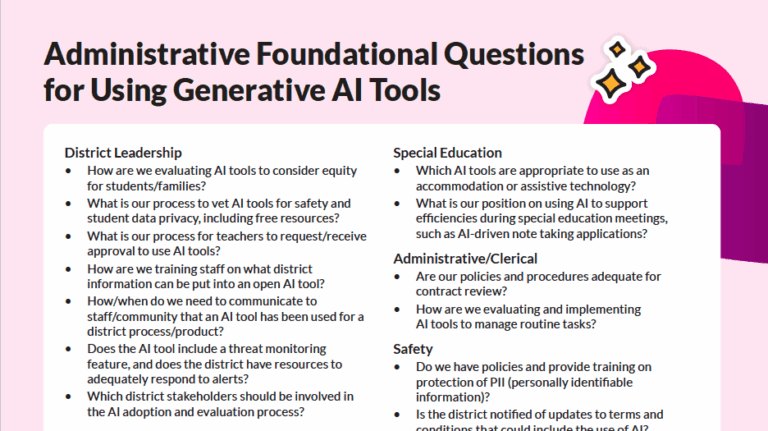This resource is provided by ACSA Partner4Purpose Navigate360.
Suicide Awareness Month is an essential time for school administrators, counselors, and mental health professionals to reflect on the importance of mental health initiatives in schools. Suicide is the second leading cause of death among teenagers, making it critical for schools to play an active role in prevention efforts. This blog will explore how to build a comprehensive suicide awareness and prevention program in your district, the importance of training staff, and ways to empower your school community to communicate concerns effectively.
Establish a Multi-Disciplinary Team
Begin by assembling a dedicated team of professionals, including school counselors, psychologists, social workers, administrators, and teachers. This team will be responsible fordeveloping, implementing, and monitoring the suicide prevention program. With resources like a Behavioral Case Manager, teams can effectively manage and coordinate interventions across the district, ensuring that students receive the appropriate care and support.
Conduct a Needs Assessment
Assess the current mental health climate in your district. This could involve surveys, focus groups, and data analysis to identify risk factors, existing resources, and areas of improvement. Understanding the unique challenges faced by your students allows you to tailor the program to meet their specific needs. For schools looking to enhance their assessment process, participatingin Navigate360’s Suicide Awareness & Prevention webinar with Dr. Scott Poland can offer valuable insights and practical strategies.
Develop Policies and Procedures
Clear policies and procedures should outline the steps to take if someone is identified as being at risk, the roles of different staff members, and the protocols for involving external mental health services.
Implement Training Programs
Training is crucial for equipping teachers, staff, and administrators with the skills to identify at-risk students and intervene appropriately. Schools can benefit from comprehensive Suicide Awareness Training programs which empower educators to recognize warning signs and take immediate, effective action.
Create a Supportive Environment
A supportive school environment fosters a culture of openness, where students feel comfortable discussing their mental health issues without fear of judgment. Anti-bullying programs, peer support groups, and mental health initiatives can contribute to a more inclusive and safe school culture.
Incorporate Suicide Prevention into Curriculum
Integrate mental health education into the curriculum to raise awareness and reduce stigma. Health classes are an excellent opportunity to educate students about the signs of depression, anxiety, and suicidal ideation. Encourage discussions that promote resilience and coping strategies.
Engage Parents and the Community
Suicide prevention requires a community-wide effort. Host workshops and provide resources for parents to help them recognize signs of distress in their children. Partner with local mental health organizations to extend support beyond the school environment.
Establish Crisis Intervention Procedures
Despite the best prevention efforts, crises can still occur. It’s vital to have a crisis intervention plan in place. This should include protocols for immediate response, communication with parents and the community, and postvention strategies to support students and staff after an incident.
Conclusion
Building a suicide awareness and prevention program in your school district is a vital step toward holistic student safety. By establishing a dedicated team, training staff, fostering a supportive environment, and promoting open communication, schools can create a network of support that catches students before they fall through the cracks. As we observe Suicide Awareness Month, let’s commit to ensuring that our schools are places where every student feels seen, heard, and valued. Engaging with initiatives like the Together for Zero pledge and utilizingspecialized training and resources can further empower your school community in the ongoing battle against student suicide.

































